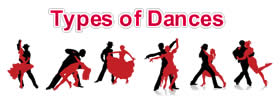Difference between Mall and Plaza
Key Difference: Shopping malls or malls are large enclosed spaces that are often characterized with many stores that sell merchandise to the public. Malls can be medium to large in size, depending on the construction and the number of stores that it wants to hold. Plaza is an open, public place near a bustling city or town. The term ‘plaza’ is derived from Spanish word referring to an open field. Plazas are open places or city squares that are surrounded by buildings, stores, shops and offices.
Malls and plazas are two terms that are very different from each other in the traditional usage, but with the modern usage the lines have started to blur. Malls and plazas are actually terms that are used to refer to two different things, but it may also refer to the same thing in some connotation. Malls are large buildings that house many stores, shops and are connected using walkways and bridges. The term plazas refer to an open area in a city or town that allows its citizens to sit and relax.
 Shopping malls or malls are large enclosed spaces that are often characterized with many stores that sell merchandise to the public. These places are also referred to as shopping arcade or shopping precinct. Malls can be medium to large in size, depending on the construction and the number of stores that it wants to hold. Shopping centers usually refer to smaller malls, while shopping malls are used to refer to the large shopping areas. The malls are enclosed and have centralized cooling or heating, depending on the weather and the area where the mall is located. Malls are also car-friendly and are associated with having large parking spaces in an underground parking lot or an adjoining building. The malls also have many different stores that sell many different kinds of merchandise, including food, jewelry, clothes, specialized stores, watches, etc.
Shopping malls or malls are large enclosed spaces that are often characterized with many stores that sell merchandise to the public. These places are also referred to as shopping arcade or shopping precinct. Malls can be medium to large in size, depending on the construction and the number of stores that it wants to hold. Shopping centers usually refer to smaller malls, while shopping malls are used to refer to the large shopping areas. The malls are enclosed and have centralized cooling or heating, depending on the weather and the area where the mall is located. Malls are also car-friendly and are associated with having large parking spaces in an underground parking lot or an adjoining building. The malls also have many different stores that sell many different kinds of merchandise, including food, jewelry, clothes, specialized stores, watches, etc.
The concept of the mall has not been a new one; they have been around since Ancient Rome. The concept itself has been acquired from the Trajan's Market that was one of the earliest shopping centers that established in Rome. Rome’s are also known for its many bazaars, which eventually developed to shopping malls. The malls gained popularity around the 1920s, following World War II, when people started shifting to the suburbs from the city. In order to make it easier for the people to shop, many stores were opened in one bigger store that allowed easier access to the various stores in the same place.
The malls have a variety of branded and local based stores. The prices of the stores also vary depending on the type of the store; while branded stores are quite pricy; other smaller stores offer normal prices on merchandise. Malls are also associated with having food courts, movie theatres, play area and many other attractions to draw in the public. A few malls, such as the Mall of America in Bloomington, Minnesota, have also housed an amusement park inside to mall itself. Malls are quite large and require a lot of time to try and visit every store. They have elevators, escalators, stairs and walkways to help the public get around from one place to another. There are various different kinds of malls: Neighborhood center, Community center, Regional center, Superregional center, Fashion/specialty center, Power center, Theme/festival center and outlet center. Another feature of the mall is that they cannot conduct sales online, they must have a proper outlet; though they can have their own websites that state upcoming events, the number of stores or a list of the stores they have, etc.
 Plaza is an open, public place near a bustling city or town. The term ‘plaza’ is derived from Spanish word, referring to an open field. Plazas are open places or city squares that are surrounded by buildings, stores, shops and offices. The plazas provide people with an open area to sit, rest and can also include a scenic view of a fountain, statue, etc. Plazas are often large areas.
Plaza is an open, public place near a bustling city or town. The term ‘plaza’ is derived from Spanish word, referring to an open field. Plazas are open places or city squares that are surrounded by buildings, stores, shops and offices. The plazas provide people with an open area to sit, rest and can also include a scenic view of a fountain, statue, etc. Plazas are often large areas.
Plazas were created all through the Spanish America and the Spanish East Indies, known as plaza mayor. The plaza mayor was at the center of three closely related institutions: the cathedral, the cabildo or administrative center. It would provide a place for large people or military to gather in times of crisis or in times of a fiesta. Modern usage of the term refers it as a large area where many people can gather and sit down, which is placed between buildings, a street intersection with a statue, fountain, etc.
There is another usage of plaza that refers to a shopping center or a mall. The first shopping center to take up the name was the "Country Club Plaza" in Kansas City, Missouri in 1922. It had been designed with Spanish architectural details. However, recently the term refers more to a shopping complex. It is can even be used to describe a single building with some semi-public street-level areas and is often near to a hotel or an office tower. Plazas can also refer to the rest stops that are available on expressways that allow people to rest, get food, coffee, etc.
Merriam Webster defines ‘plaza’ as:
- a public square in a city or town
- an open area usually located near urban buildings and often featuring walkways, trees and shrubs, places to sit, and sometimes shops
- an area adjacent to an expressway which has service facilities
Image Courtesy: prodryers.com, wirednewyork.com









Add new comment